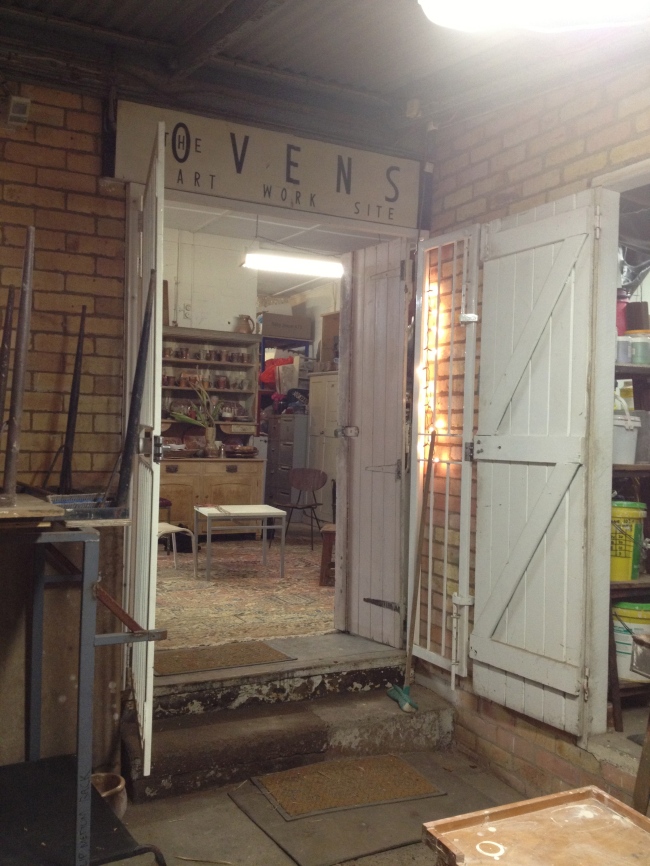I’ve died and gone to Clayschool, a local pottery studio run by Ray Cavill in the West End. Housed in a former bakery, Clayschool has eight-plus wheels, massive tables and, the best part, a circle of chairs for mid-session supper and discussion of the weekly pot and the weekly book selected by Ray.
 Ray has been working with clay for three decades. More specifically, Ray taught pottery at TAFE for 20 years before opening his own studio so he could teach his way. Ray’s way suited my learning style. He gave detailed explanations about the philosophy behind pottery today, the elemental structure of clay and step-by-step techniques for shaping bowls and cylinders.
Ray has been working with clay for three decades. More specifically, Ray taught pottery at TAFE for 20 years before opening his own studio so he could teach his way. Ray’s way suited my learning style. He gave detailed explanations about the philosophy behind pottery today, the elemental structure of clay and step-by-step techniques for shaping bowls and cylinders.
According to Ray, it’s a waste of time to try and compete with industry. Instead, pottery should be a form of self-expression or the art of creating something unique. For example, unearthing the clay, refining it, kneading it, throwing it and glazing it to create a piece that couldn’t be made by anyone else, anywhere else.
While Ray had five steps written on the whiteboard, these three stuck with me:
1. Relax
2. Don’t touch clay until it’s moving
3. Easy on easy off
I liked starting by relaxing. Unclenching, loosening and breathing reminds me to experience the joy of creation. Not touching the clay until it’s moving reminds me of the make-up of clay and how my hands are stacking the internal plates. Easing on and off reminds me of the power of pressure. Ray mentioned that a pot will take ‘x’ amount of pressure. Whether the pressure is applied quickly or slowly, it’s still the same amount, ‘x’. At this stage, I need to work slowly to have more control.
In the end I threw four pots of different sizes. I sorted them in my mind: this pot for earrings, that pot for cereal, this pot for miso soup, that pot for pesto. Ray’s challenge to us newbies was to throw three bowls. I felt accomplished with four, especially since my first was a disaster.
I have to admit; this wasn’t my first time throwing. I took a six week pottery term in a Northern Brisbane suburb earlier this year with my friend Caitlin who had been throwing bowls and mugs back in Pittsburgh. The term introduced me to the vocabulary of pottery but did not instill a lot of confidence in me. In just three hours at Clayschool I could see myself improve, or more specifically, I could see the curve of my bowls improve.
Until next Tuesday, I’ll do my homework in the notebook Ray gave me as a new student. My task: feel bowls, cups, plates and vases and take notes on what I like. By the end of the 10-week term, I’ll be creating objects influenced by the designs I find.
Side note: written on Ray’s studio wall was “preparation + opportunity” which I took to be an apt formula for success.
















































